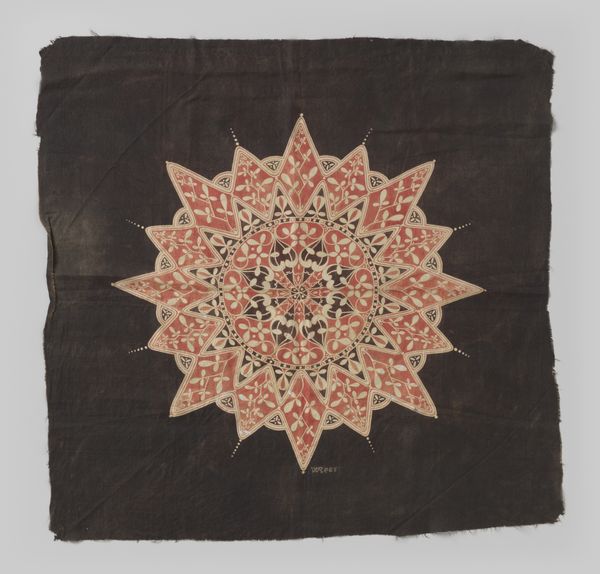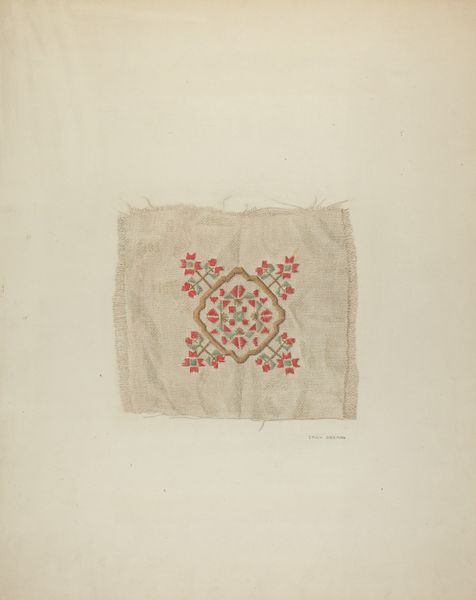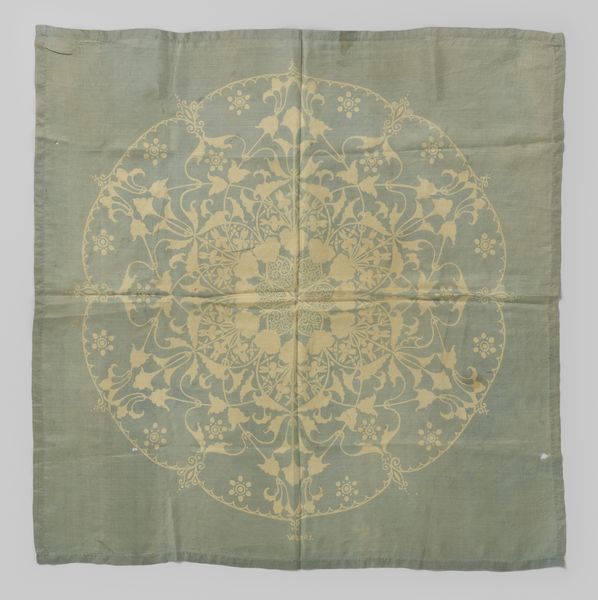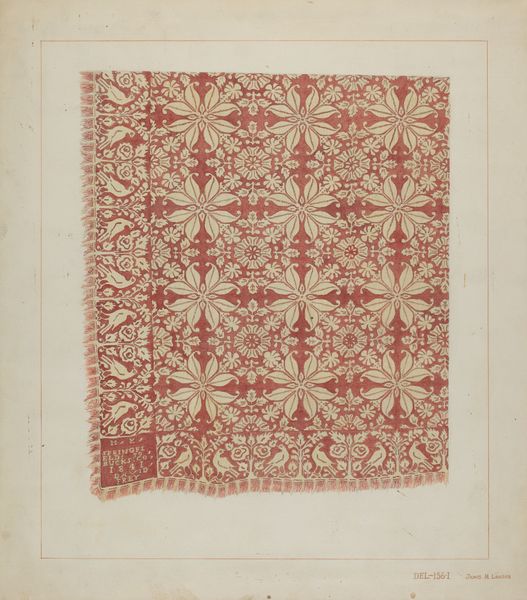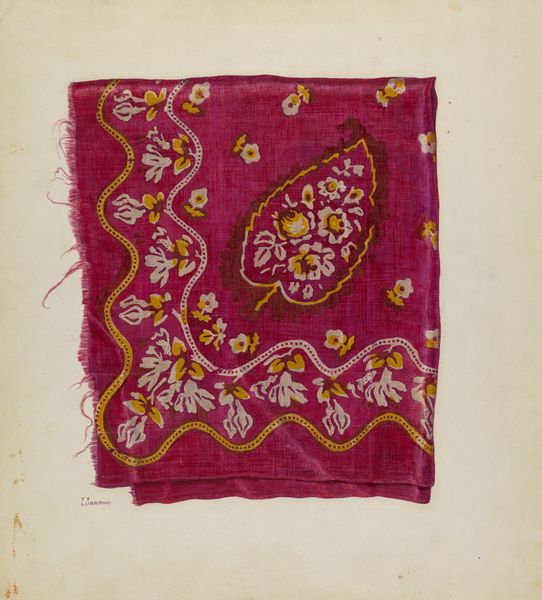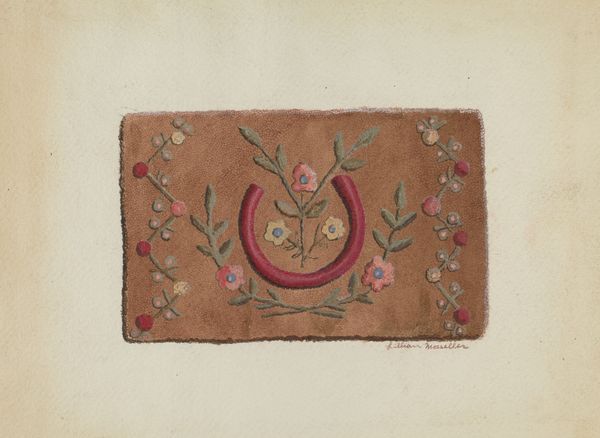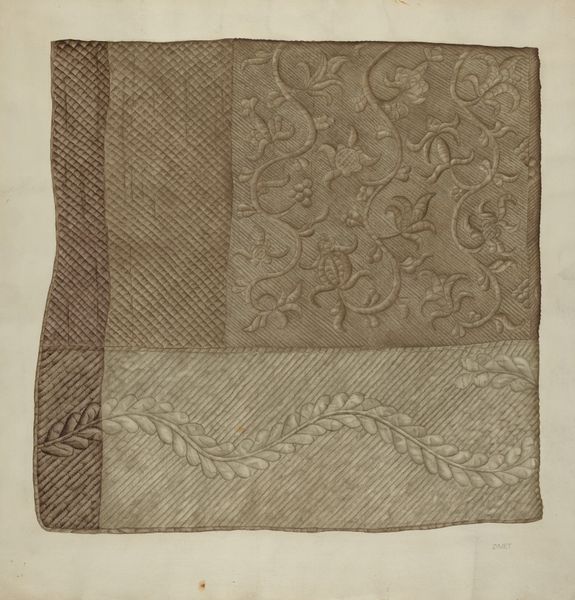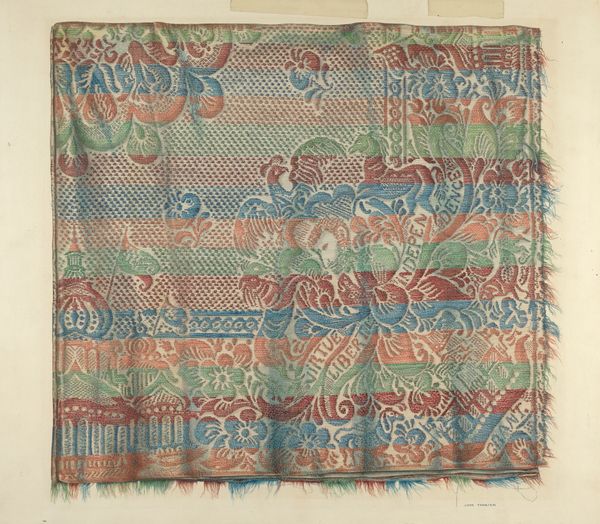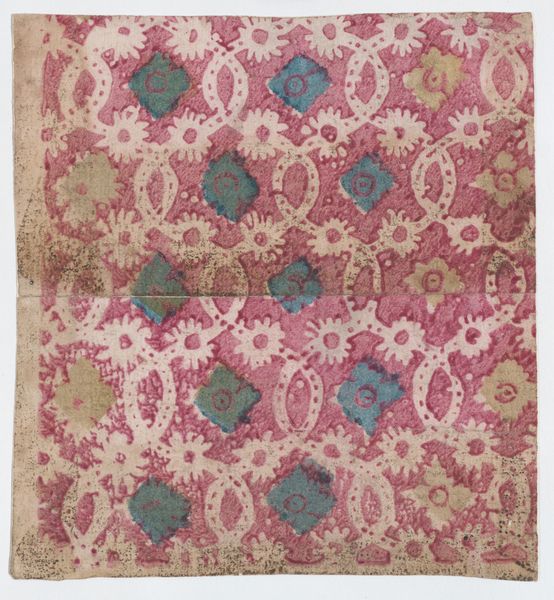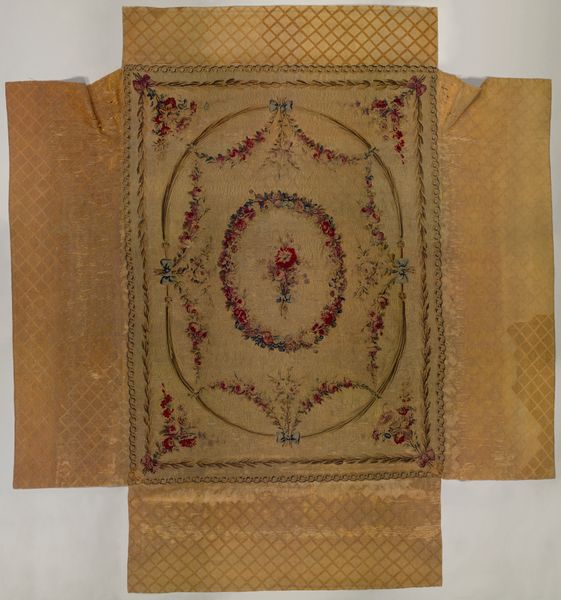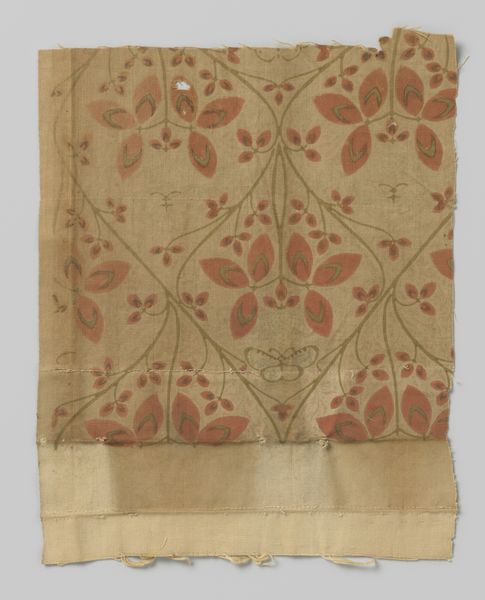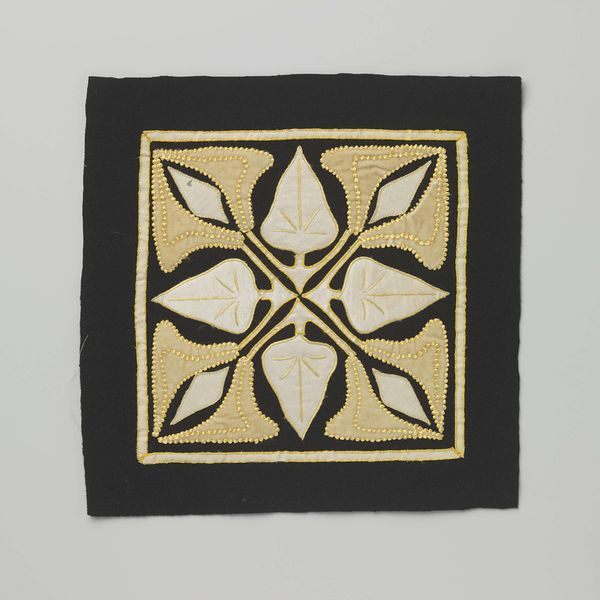
textile
#
pattern
#
asian-art
#
textile
#
abstraction
#
decorative-art
Dimensions: length 52 cm, width 50 cm
Copyright: Rijks Museum: Open Domain
Curator: Let's discuss this striking batik cloth, dating to around 1910 and titled "Gebatikte sierdoek met gestileerd Oosters motief," translating to "batik ornamental cloth with stylized oriental motif". Editor: My immediate impression is one of controlled vibrancy. The colour palette, predominantly burgundy and muted blues, evokes a sense of calm. The repeating radial patterns hint at an interesting process, but tell me more about the intended cultural function, and if this artwork, with its stylized motifs, tells us about the world at the time. Curator: Absolutely, let's place this textile within its historical moment. Created during a time when European engagement with Asian artistic traditions was peaking, we see an orientalism filtered through the lens of decorative arts, it likely speaks to Dutch colonialism. Such objects were circulated amongst those connected with Colonial administrators. The "exotic" motif made accessible to European audiences reflects a power dynamic inherent in these cross-cultural exchanges. Editor: It certainly embodies the romanticized vision that came to characterize much decorative art of the period. But, what can we gather about its creation? Looking at the execution, the repeated elements suggest the use of some kind of resist dyeing, the build up of dye onto textile in patterned sections suggests intense labor, the type that we often ignore with a quick appreciation for aesthetics. What exactly is "batik?" Curator: A very good question. Batik involves using wax to resist dye on cloth, building up patterns through layers. The material, probably cotton, would have been stretched and prepared, a team involved in waxing and dyeing multiple times. The skill inherent to its manufacturing would have held value. Understanding those labor dynamics is just as essential to understanding cultural nuances. Editor: It really pushes against the Westernized division of art and craft, doesn't it? A labor-intensive craft becomes an art form with social meaning beyond the beautiful design. Curator: Precisely! It challenges the very boundaries and values Western art institutions often impose. Editor: Considering the objectness of it, I start to wonder about its journey—where it was displayed and ultimately how it landed here for display. All aspects, and points of origin, feed into the ongoing global movement of art. Curator: And, perhaps more important than a passive analysis of what something 'is,' thinking about the labor is central to how something "becomes." I’ll consider the piece further from this materialist viewpoint, you've successfully tweaked my interest. Editor: The power of texture, craft and history. I leave thinking about labour, commodification, and the legacies involved in something visually simple, and pleasing.
Comments
No comments
Be the first to comment and join the conversation on the ultimate creative platform.
